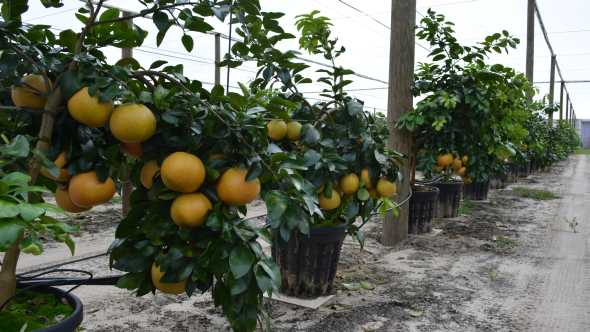Solutions for Citrus Nurseries Struggling with Labor

H-2A sources directly or indirectly supply 80% to 90% of citrus field labor.
It is difficult, if not impossible, to escape the effects of a tight labor supply. A strong economy is a blessing in many ways, but it also tightens the noose on those already struggling to attract workers to agricultural positions. Domestic labor has long turned a blind eye to agricultural employment opportunities in the fruit and vegetable sectors. Local people are just not interested in many of these available positions. Foreign guestworkers are the most logical solution. Without them, crops would go unharvested, and many agricultural employers would be in a predicament.
Citrus nurseries are not immune to this reality. Ben Bolusky, Executive Director of the Florida Nursery, Growers and Landscape Association, recently stated, “Nurseries find themselves in the same boat as other segments of agriculture; they need access to a stable, reliable, and legal workforce.”
I turned to Mike Carlton, Director of Labor Relations for Florida Fruit & Vegetable Association (FFVA), for information about the use of H-2A and its possible applicability to the citrus nursery segment: Growers, harvesters, farm labor contractors (FLCs), and other subsegments of the citrus industry have turned to H-2A to meet their labor needs. It is estimated that H-2A sources directly or indirectly supply 80% to 90% of citrus field labor. The program is complex but, when done right, it provides a reliable workforce that can return year after year. However, because the program is designed and intended for seasonal agricultural enterprises with peak periods of demand for temporary/seasonal labor, citrus nurseries have heretofore not participated.
Nurseries were viewed more as year-round businesses. As labor shortages have worsened, some have recently taken a fresh look at H-2A as a potential nursery solution. Though nurseries obviously operate year-round, most do have periods of peak demand for labor. It’s interesting to note there is no definition of “peak” or seasonal, but the Department of Labor (DOL) requires employers to prove they have peak employment needs in order to qualify for the program.
Here are some basic facts about the H-2A guestworker program:
• H-2A can supply labor for up to 10 consecutive months.
• There is no limit on the number of employees available to an employer.
• H-2A workers may not be shared among companies, unless the workers are under an FLC.
• Employers can bring the same people back year after year.
• Employers must provide free housing.
• Employers must either provide meals or a kitchen where meals can be prepared.
• Employers must provide free transportation from the home country to the place of work.
• Employers must pay for the workers’ visas.
• Employers must provide workers compensation coverage.
• Employers must provide transportation to the job.
• The DOL sets and applies an annual Adverse Effect Wage Rate to the position.
• Employers must provide at least 35 hours of work per week and guarantee to offer the worker at least 3/4 of the total hours from the contract start date through the ending date.
• The nursery must be within one hour of the housing.
• There is no minimum time period for employment. However, the Department of State does not like to issue visas for a period of less than a month of employment.
• H-2A workers can be used for farm construction projects.
• There is a lag time with H-2A that requires employers to plan ahead. This is not a last-minute solution for anything.
– The first step in the process must be completed 60 to 75 days before the start date.
– Local health departments must inspect housing and issue occupancy permits. This takes time.
• Once approved, the employer is responsible for recruiting and transporting the workers to the Embassy, securing visa appointments, and transporting them across the border and to the place of employment. Because this is a difficult step for local businesses, employers often use a contractor for this step, such as Florida East Coast Travel Services or another, similar entity.
Nurseries may need 10 to 25 workers through their peak periods. Most know when these peak periods will occur, and it may not be difficult to anticipate employment needs for these months. There is clearly a lot of planning, forethought, and cost involved with H-2A. Employers participate in H-2A out of necessity. If the need is there, and other labor sources are not the solution, this is an option that nurseries might wish to consider.
For those nurseries that may be interested, the first step is to contact an H-2A agent to discuss program requirements. Also, this year’s Agricultural Labor Relations Forum to be held in Orlando in September, will have an afternoon session dedicated solely to the H-2A program.
FFVA’s H-2A Agent Services manages agency applications and filings for its members, filing job orders with the state, securing the number of visas required, and placing required employment advertisements in newspapers.










